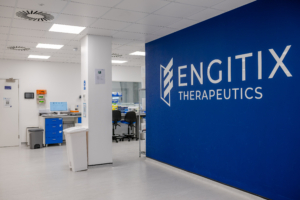PD-1+ T cells trigger pulmonary fibrosis
A team of researchers from the US and the UK have found that CD4-positive T cells harboring the PD-1 immune checkpoint protein can promote excessive connective tissue formation in lung cells.
Reining in the T cells with an PD1 inhibitor reduced fibrosis symptoms in a mouse model for idiopathic pulmonary fibrosis (IPF). The chronic condition occurs when human lung fibroblasts (HLFs) produce abnormally high amounts of connective tissue, which leads to short-breathness and can lead to death when not treated.
The immune system has been shown to play a major role in the initiation and progression of pulmonary fibrosis, and studies suggest T cells containing the PD-1 protein can produce molecules that exacerbate the condition. With a goal of demystifying the mechanisms that underlie PF, Celada et al. performed molecular and chemical tests on human T cells, human lung fibroblasts, and mouse models.
To identify immune responses that precede collagen deposition, the researchers conducted molecular, immunohistochemical (IHC), and flow cytometric analysis of human and murine specimens. IHC staining revealed programmed cell death-1 (PD-1) protein up-regulation on IPF lymphocytes. PD-1+CD4+ T cells with reduced proliferative capacity and increased transforming growth factor-beta (TGF-beta)/interleukin-17A (IL-17A) expression were detected in IPF, sarcoidosis, and bleomycin CD4+ T cells.
PD-1+ T helper 17 cells were the predominant CD4+ T cell subset expressing TGF-beta. Coculture of PD-1+CD4+ T cells with human lung fibroblasts induced collagen-1 production. Strikingly, ex vivo PD-1 pathway blockade resulted in reductions in TGF-beta and IL-17A expression from CD4+ T cells, with concomitant declines in collagen-1 production from fibroblasts.
Molecular analysis demonstrated PD-1 regulation of the transcription factor STAT3. Chemical blockade of STAT3, using the inhibitor STATTIC, inhibited collagen-1 production. Both bleomycin administration to PD-1 negative mice or use of antibody against PD-L1 demonstrated significantly reduced fibrosis compared to controls, supporting the idea that PD-1 could be a fruitful therapeutic target for the disease.


 Photo from Giulia Bertelli on Unsplash
Photo from Giulia Bertelli on Unsplash  Engitix
Engitix Evotec SE
Evotec SE